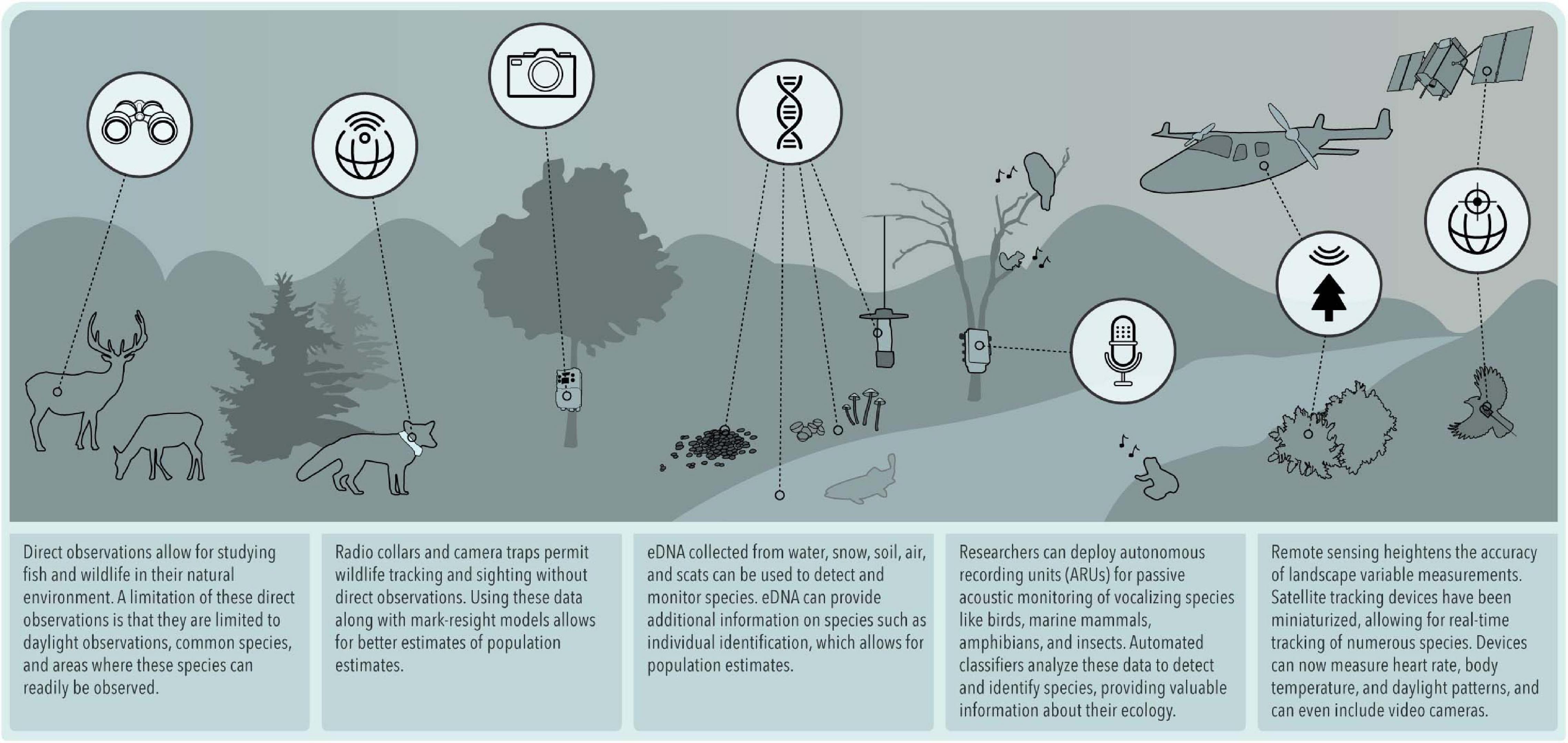A Window into the Wild: Wildlife Cameras Reveal Nature’s Mysteries
Wildlife cameras are essential tools for observing animals in their natural habitats. They capture moments that are often missed by the human eye.
These cameras provide a unique window into the lives of wildlife. They help researchers understand animal behavior, track movements, and monitor populations. Wildlife cameras are also valuable for conservation efforts. They allow us to see how animals interact with their environment.
With the increasing impact of climate change and human activity, knowing more about wildlife is crucial. Observations from these cameras can guide important decisions about protecting ecosystems. In a world where many species face threats, wildlife cameras serve as vital aids. They help us appreciate the beauty and complexity of nature, fostering a deeper connection with our environment.

Introduction To Wildlife Cameras
Wildlife cameras play a crucial role in observing nature. They help capture images of animals without human interference. This technology has changed how we study wildlife. It allows us to see their behavior in their natural habitat.
Capturing The Untouched World
Wildlife cameras are designed to be discreet and efficient. They often blend into the environment. This helps avoid disturbing animals. Here are some key features:
- Motion Sensors: Trigger the camera when animals move.
- Night Vision: Capture clear images in low light.
- Weatherproof: Function in various weather conditions.
These features allow researchers and nature lovers to capture stunning images. They provide a glimpse into the lives of animals that are usually hidden from view.
Evolution Of Wildlife Photography
The journey of wildlife photography began with simple cameras. Early photographers had to be patient and quiet. They often waited hours to capture a single shot.
With the introduction of wildlife cameras, the game changed. These cameras have advanced significantly over the years. Here’s a brief timeline:
| Year | Development |
|---|---|
| 1900s | First wildlife photography using manual cameras. |
| 1980s | Introduction of film-based trail cameras. |
| 2000s | Digital cameras become popular for wildlife observation. |
| Today | High-tech cameras with video capabilities and mobile alerts. |
Wildlife cameras now offer clearer images and better features. They have transformed how we observe and study wildlife.

Technological Advances In Cameras
Wildlife cameras have improved a lot over the years. New technology makes them better at capturing images. These advancements help us learn more about animals. Two important features stand out: high-resolution imaging and night vision.
High-resolution Imaging
High-resolution imaging is vital for wildlife observation. It provides clear and detailed pictures. This clarity helps researchers identify species easily.
- High-definition images show features like fur patterns.
- Sharp images help in understanding animal behavior.
- Quality photos allow for better documentation of wildlife.
Many modern cameras offer resolutions over 20 megapixels. This detail improves studies and enhances our understanding of ecosystems.
Night Vision And Infrared
Night vision technology is another key feature of wildlife cameras. Animals are often more active at night. Infrared technology captures their movements in total darkness.
- Infrared sensors detect heat emitted by animals.
- Night vision allows for 24-hour observation.
- This feature helps track nocturnal species.
With night vision, researchers gather more data. This leads to better conservation efforts and understanding of animal habits.
Unobtrusive Observation
Wildlife cameras play a vital role in unobtrusive observation. They allow researchers to watch animals without disturbing them. This method helps in gathering real data about wildlife behavior. Animals act naturally when humans are not around. This makes the information collected more accurate and reliable.
Studying Animals In Their Natural Habitat
Wildlife cameras capture images and videos in different settings. They provide a window into animals’ daily lives. Researchers can observe feeding, mating, and social interactions. These cameras can be placed in forests, deserts, and wetlands. They reveal the habits and patterns of various species.
Understanding these behaviors is essential. It helps in wildlife conservation efforts. Knowing where animals go and what they do aids in their protection. This information supports habitat preservation and restoration projects.
Minimizing Human Impact
Wildlife cameras reduce human interference in nature. Traditional observation methods can scare animals away. Cameras allow researchers to collect data without being seen. This approach protects animal welfare and promotes accurate studies.
Less human presence means less stress for wildlife. It encourages a more authentic representation of their behavior. This is crucial for developing effective conservation strategies. By minimizing human impact, we can better understand and protect wildlife.
Revealing Hidden Behaviors
Wildlife cameras provide a unique view into the lives of animals. They capture moments often unseen by human eyes. These cameras help reveal behaviors that are critical to understanding wildlife. Observing these actions can teach us about animal habits, social structures, and more.
Rare Species Documented
Wildlife cameras help track rare species. Many animals are shy or elusive. Cameras can capture their activities without disturbing them. This technology aids conservation efforts by:
- Identifying species in their natural habitat
- Documenting their population numbers
- Understanding their behaviors and needs
For example, cameras have recorded:
| Species | Location | Behavior Observed |
|---|---|---|
| Snow Leopard | Himalayas | Hunting techniques |
| Red Panda | Tibetan Forests | Foraging habits |
| Saola | Vietnam | Social interactions |
These insights are vital for protecting these rare animals.
Understanding Animal Interactions
Wildlife cameras capture interactions between different species. This helps scientists learn about food webs and ecosystem dynamics. For instance:
- Predator-prey relationships are observed.
- Competition for food is documented.
- Social structures within species can be studied.
Some key findings include:
- How wolves hunt in packs.
- How deer react to predators.
- Interactions between birds and mammals.
These observations improve our understanding of nature’s balance. They also inform conservation strategies.
Aid To Conservation Efforts
Wildlife cameras play a crucial role in conservation efforts. They help researchers gather important data. This data supports the protection of endangered species. Cameras capture images and videos without disturbing animals. This leads to better understanding and management of wildlife.
Monitoring Endangered Species
Wildlife cameras help track endangered species in their natural habitat. Researchers can see how these animals behave. They can identify individual animals by their unique markings. This information is vital for conservation strategies.
Monitoring helps assess population sizes. It provides insights into their health and reproduction rates. Understanding these factors aids in creating effective protection plans. Cameras also reveal threats to these species. This includes habitat loss and human interference.
Habitat Use And Migration Patterns
Wildlife cameras show how animals use their habitats. They help in understanding which areas are important for survival. Cameras capture movement patterns and migration routes. This information is essential for habitat management.
Knowing migration patterns helps protect critical areas. It ensures that animals have safe passages. This knowledge leads to better planning for land use. Conservation efforts can focus on preserving these vital habitats.
Engaging The Public
Wildlife cameras play a key role in engaging the public. They provide a unique view of nature. People can observe animals in their natural habitats. This connection can inspire conservation efforts. Understanding wildlife leads to greater appreciation. Education and involvement help protect our environment.
Educational Outreach
Wildlife cameras serve as powerful tools for education. They allow schools to bring nature into the classroom. Students can learn about local species and ecosystems.
- Real-time footage enhances learning experiences.
- Teachers can use videos to spark discussions.
- Students gain a better understanding of biodiversity.
These cameras can also support community programs. Local wildlife organizations can host events. They can showcase footage and share knowledge. This helps to raise awareness about wildlife issues.
Citizen Science Contributions
Citizen science thrives with wildlife cameras. Regular people can contribute to scientific research. They can help track animal populations and behaviors.
- Volunteers can analyze footage.
- Data collected aids in conservation efforts.
- Public involvement increases the research base.
By participating, citizens feel connected to nature. They become advocates for wildlife protection. This engagement fosters a sense of responsibility. It encourages communities to take action.
Data Collection And Research
Wildlife cameras play a key role in data collection and research. They gather information that helps scientists study animals. These cameras provide insights into wildlife behavior. They also track animal movements in their natural habitat. This data is vital for understanding ecosystems.
Long-term Environmental Studies
Wildlife cameras support long-term environmental studies. They allow researchers to monitor changes over time. Researchers can observe how species adapt to their surroundings. This information helps identify patterns in animal behavior.
These studies contribute to conservation efforts. They reveal how habitats change due to human activity. Understanding these changes helps protect vulnerable species. Wildlife cameras can document rare species as well.
Climate Change Indicators
Wildlife cameras serve as important climate change indicators. They capture how animals react to changing climates. Researchers can track shifts in animal migration and breeding. This information helps understand climate impacts on wildlife.
These cameras also show changes in habitat use. Animals may move to cooler areas as temperatures rise. Observing these changes helps scientists predict future impacts. This data is essential for effective conservation strategies.

Credit: www.frontiersin.org
Challenges And Ethical Considerations
Wildlife cameras offer many benefits for observing nature. Yet, they come with challenges. Ethical concerns arise in how we use these cameras. Understanding these issues is essential for responsible wildlife observation.
Privacy Concerns In The Wild
Wildlife is not just a subject for study. Animals have their own lives and habitats. Cameras can intrude on their privacy. This raises important questions.
- Do animals feel stressed by being watched?
- Can constant observation change their behavior?
- What rights do animals have to their own space?
It’s vital to consider how we set up cameras. Choosing the right location is key. Placing cameras in high-traffic areas may disrupt natural behavior. We should aim to minimize our impact.
Balancing Observation And Disturbance
Observation is valuable for research. Yet, it should not come at the cost of animal welfare. Finding a balance is crucial.
- Limit the number of cameras in one area.
- Use remote cameras to reduce human presence.
- Monitor the impact on local wildlife regularly.
Ethical wildlife observation should respect animals. The goal is to learn without causing harm. Responsible use of wildlife cameras ensures that nature can thrive.
Future Of Wildlife Cameras
The future of wildlife cameras looks bright. New technology is changing how we observe nature. These cameras will become smarter and easier to use. They will help us learn more about wildlife.
Innovations On The Horizon
Many exciting innovations are coming for wildlife cameras. Some key advancements include:
- AI Technology: Cameras will soon use artificial intelligence. This will allow them to recognize animals and their behaviors.
- Solar Power: New models will run on solar energy. This will make them more eco-friendly.
- Higher Resolution: Expect clearer images and videos. This will help in better wildlife studies.
- Real-Time Monitoring: Cameras will send live feeds to users. This means quicker responses to wildlife activities.
Expanding Accessibility And Coverage
Wildlife cameras are becoming easier to access. More people can use them in various locations. Key factors include:
- Lower Costs: Prices for wildlife cameras are dropping. More people can afford them.
- Online Platforms: Many websites offer sharing tools. Users can easily share their findings.
- Mobile Apps: New apps allow users to control cameras remotely. This makes monitoring simple.
- Global Coverage: More cameras are being set up worldwide. This increases our understanding of different ecosystems.
These changes will improve wildlife observation. More people will engage with nature through these cameras.
Frequently Asked Questions
Why Should I Use Wildlife Cameras For Observation?
Wildlife cameras are essential tools for observing animal behavior. They allow for remote monitoring without disturbing wildlife. This helps researchers gather valuable data on species, habitats, and interactions. Additionally, they capture images at any time, providing insights into elusive or nocturnal animals.
How Do Wildlife Cameras Benefit Research?
Wildlife cameras significantly enhance research by providing real-time data. Researchers can track animal movements and behaviors over time. This information is crucial for conservation efforts and habitat management. Furthermore, they help identify trends in wildlife populations, aiding in effective decision-making.
Are Wildlife Cameras Easy To Set Up?
Yes, wildlife cameras are designed for easy setup. Most models come with user-friendly instructions and settings. They often feature adjustable mounts for various terrains. Once positioned, they require minimal maintenance, allowing users to focus on observation rather than equipment management.
Can Wildlife Cameras Help In Conservation?
Absolutely, wildlife cameras play a vital role in conservation. They monitor endangered species and track their habitats. This data helps conservationists develop effective strategies for protecting these animals. Additionally, cameras can deter poaching by increasing surveillance in vulnerable areas.
Conclusion
Wildlife cameras play a key role in observing animals. They capture moments we often miss. With these cameras, researchers gain valuable insights. They help us understand animal behavior and habitats. This knowledge supports conservation efforts. Wildlife cameras also engage nature lovers.
They spark curiosity and awareness about wildlife. Using them is easy and rewarding. Investing in a wildlife camera benefits both nature and us. Explore the wonders of wildlife today. You’ll be amazed by what you discover.







